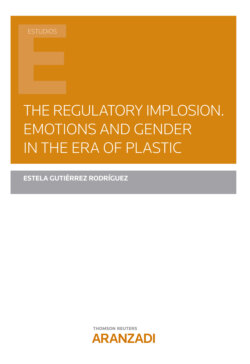Читать книгу The Regulatory Implosion. Emotions and Gender in the Era of plastic - Estela Gutiérrez Rodríguez - Страница 17
На сайте Литреса книга снята с продажи.
6.1.1. Phthalates
ОглавлениеThe REACH Regulation recognizes this substance in its different variants as toxic for reproduction37. Phthalate with its multiple formulations, entered the market in the 1920s and its exponential increase took place in the 1950s with the introduction of polyvinyl chloride (PVC).
The main reason is phthalates gives to PVC flexibility, making easier to mold it and make it more resistant, thus managing to launch it into global markets38. Thanks to phthalate, PVC commercialization has grown exponentially, used in innumerable forms, uses and purposes. So almost 100 years ago we witnessed the birth of the commonly called “plastic” and therefore also the toxic exposure for the human ecosystem that accompanies it39.
Helmunt Reinecke, from the Institute of Polymer Science and Technology (CSIC), in Madrid (Spain), assures that “It is the only way to laminate PVC in an economical and simple way, as this polymer is hard and has a softening temperature of 85 degrees. centigrade. The most widely used plasticizers are phthalates because they allow, due to their chemical structure, a very good mixture with the polymer and therefore any composition can be mixed and developed. However, over time the phthalates rise to the surface of the product. The consequences are that unwanted contamination occurs in the environment that surrounds it. Within the body, the metabolites derived from plasticizers act as powerful carcinogens and impair reproductive capacity”40.
In other words, phthalates do not chemically bind to PVC due to their composition, which causes a progressive release of its particles into the environment, food and/or drink and especially depending to the atmospheric conditions to which they are subjected.
If we understand that plastic is an easy material to work with and at a considerable low business cost, we will understand the ease with which it is commercialized beyond our borders, for example to Asia, and we will understand as well the difficulty of making it disappear from our lives, from the food chain, as well as from the human ecosystem and globally.
Only in Europe is used one million tons of phthalates, 90% of the total is used in the manufacturing process of plastics, adding it as an additive to polymers because of its plasticizing and adhesive physical properties41. The remaining 10% is used for the manufacture of very diverse daily use products, such as: hygiene and beauty products, food packaging, perfumes, moisturizers and sun protection creams, air fresheners, paints, sex toys, soft carpets for children’s floors, Christmas decorations, ear plugs, contact lenses, pharmaceuticals, hospital artificial foods, food wrappers, televisions, incense, shower curtains, balloons, clothing fabrics, backpacks, furniture, bottled water, and a very long etc.42.
Regarding human exposure to the various forms of phthalates, have been conducted numerous studies reporting that between 89% and 98% of the analyzed subjects, had concentrations of phthalates in their bodies (as well as other endocrine disrupting substances).
Among the groups analyzed, younger persons and women, always tend to have a higher concentrations of phthalate metabolites than adult males43.
Within the most worrying exposures, we find PET (polyethylene terephthalate) plastic bottles. The Spanish University of Granada, carried out a study of the plastic bottles in order to discover if they showed hormonal activity. Indeed analisys showed that 85% of plastic bottles sold in any store have estrogenic activity and 42% anti-androgenic44.
Even more worring is the fact that, the plastic bottles manufacturers ensure that it is not the PET responsible for the hormonal activity found in the bottles. Additives are added to the bottles to be able to launch them on the market, to improve the shape, color, appearance, and help to preserve the liquid they contain.
So apparently, plastic bottles in contact with water or any other liquid intended for human consumption, may contain additives from a long list of 600 formulations, that according to the investigations carried out, have ability to cause hormonal disruption45.
I do not want to end this section without leaving at least a little hope, so in this last paragraph we can see the contribution of Dr. Fenollar from the mechanical engineering department of Polytechnic University of Valencia, who in his extensive study on natural plasticizers, has determined that it is perfectly possible to substitute phthalates in the plasticizing process to make PVC flexible. Can be used non-toxic products of natural origin, and in addition biodegradable, like epoxidized fatty acid esters, and epoxidized linseed oil. It is necessary,he says, to continue research in order to provide the process with greater resistance and versatility, and to open different paths to minimize the hormonal alterations caused by EDC46.
In fact, there are already natural plasticized systems based on corn or other biodegradable plant bases on the market, and much research continues.
